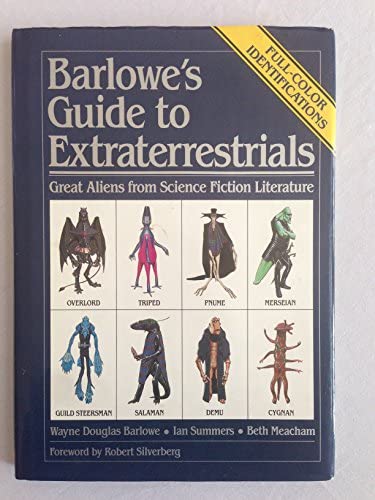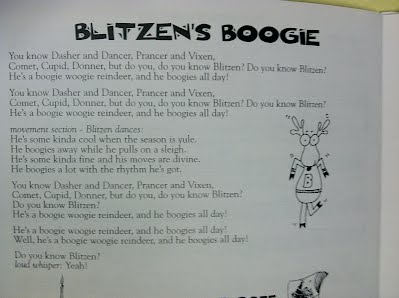Attachment Theory by John Bowlby And Mary Ainsworth.
In the late 1940s, John Bowlby proposed a theory of attachment that revolutionized our understanding of infant-caregiver relationships. Building on the work of earlier theorists, Bowlby argued that infants are biologically programmed to seek proximity to caregivers in times of need and that this innate tendency forms the basis for emotional bonds between infants and caregivers. According to attachment theory, these early bonds are crucial for healthy development, as they provide a sense of security and safety that laid the foundation for all future relationships.
Attachment theory has been extensively studied in the years since Bowlby first proposed it, and researchers have identified different types of attachment styles that can be observed in infancy. The most well-known of these is the secure attachment style, in which infants feel safe and secure in their relationship with their caregiver and are able to explore their environment without fear. In contrast, insecure attachment styles (such as avoidant or ambivalent) are characterized by anxiety and insecurity about the availability and responsiveness of caregivers.
In the late 1940s, British psychiatrist and psychoanalyst John Bowlby began developing his theory of attachment. His work was influenced by ethologist Konrad Lorenz’s studies of imprinting in birds, which showed that certain species of chicks become attached to the first moving object they see after hatching. Bowlby believed that infants are born with an innate need to be close to a caretaker, and that this need is essential for their survival.
Bowlby’s theories were further developed by American psychologist Mary Ainsworth. Ainsworth conducted the now-famous “strange situation” experiment, in which she observed how infants reacted when separated from and reunited with their mothers. Based on her observations, Ainsworth identified three different types of attachment: secure, anxious-ambivalent, and anxious-avoidant.
Today, attachment theory is one of the most influential theories in child development. It has been used to explain a wide range of behaviors, including why we form attachments in the first place, how those attachments affect our emotions and behavior, and what happens when those attachments are broken.
John Bowlby Attachment Theory
John Bowlby was a British psychologist who developed the attachment theory of personality. This theory posits that human beings have an innate need to form close, emotional bonds with others and that this need is strongest in early childhood. According to the theory, these attachments play a critical role in our psychological development and well-being.
Bowlby’s attachment theory has its roots in ethology, the study of animal behavior. He was influenced by the work of Konrad Lorenz, who described how baby animals (imprints) become attached to their mothers during a critical period of development. Lorenz showed that if imprinting is not allowed to occur naturally, the baby animals will be less likely to survive and thrive.
Bowlby applied this concept of attachment to humans and argued that our need for close relationships with others is also biologically based. He believed that these attachments are essential for healthy psychological development. bowlby further suggested that children who do not form secure attachments with their caregivers may struggle later in life, as they will have difficulty forming trusting and intimate relationships with others.
The attachment theory has been extensively researched over the past few decades and there is now substantial evidence supporting its key ideas. Bowlby’s original formulation of the attachment theory has been expanded upon and refined by other theorists, but his basic insights remain at the heart of current thinking on this topic.

Credit: www.parentingforbrain.com
What is Bowlby And Ainsworth Attachment Theory?
In the 1940s and 50s, British psychologist and psychoanalyst John Bowlby developed attachment theory, which posits that human beings are born with an innate need to form close, emotional bonds with other people. According to attachment theory, these bonds are essential for our physical and psychological survival.
Bowlby’s work was influenced by ethologist Konrad Lorenz’s observations of baby geese, who become attached to their mother almost immediately after hatching.
Lorenz found that if he separated a gosling from its mother, the youngster would search frantically for her until they were reunited. Bowlby believed that this strong bond between mother and child was an evolutionary adaptation that ensured the child’s survival.
Bowlby further posited that children who do not form attachments or who have unstable attachments are more likely to experience problems later in life, such as anxiety, depression, and relationship difficulties.
In the 1960s, American psychologist Mary Ainsworth expanded on Bowlby’s work with her own groundbreaking research on attachment styles. Ainsworth conducted the now-famous “strange situation” experiment in order to observe how young children respond when separated from their primary caregiver (usually their mother). The experiment showed that there are three distinct attachment styles: secure attachment, anxious-ambivalent attachment, and anxious-avoidant attachment.
Securely attached children feel confident that their caregiver will be available when needed and they feel comfortable exploring their surroundings without fear of abandonment. Anxious-ambivalent children feel insecure and worried about being abandoned or rejected by their caregiver. They may be clingy or demanding of attention but also resistant to comfort or consolation from their caregiver.
Anxious-avoidant children seem indifferent to both separation from and reunion with their caregiver; they often appear uninterested in developing close relationships with others.
What are the 4 Types of Attachment According to Mary Ainsworth?
In her groundbreaking work on attachment, Mary Ainsworth identified four different attachment styles that help explain how we form relationships with others. The four attachment styles are secure, anxious-ambivalent, avoidant, and disorganized. Let’s take a closer look at each of these attachment styles and how they might affect our relationships.
Secure attachment is characterized by a sense of safety and security in relationships. People with a secure attachment style feel comfortable being close to others and sharing their feelings and thoughts. They’re also able to handle disagreements and conflict in a healthy way.
Anxious-ambivalent attachment is characterized by anxiety about being abandoned or rejected by others. People with this attachment style often have difficulty trusting others and tend to be clingy or needy in their relationships. They may also have trouble expressing their own needs or desires.
Avoidant attachment is characterized by a fear of intimacy and closeness. People with an avoidant attachment style often keep their distance from others emotionally and physically. They may have trouble forming close attachments or may prefer not to get too close to people for fear of rejection or abandonment.
Disorganized attachment is characterized by chaotic or confused relationships with others.
What was John Bowlby’S Contribution to Attachment Theory?
John Bowlby was a British psychiatrist who is best known for his contributions to attachment theory. Attachment theory is the idea that infants and young children form attachments to their primary caregivers, and that these attachments are important for the child’s development and well-being.
Bowlby’s work on attachment theory began in the 1950s, when he conducted research on how separation from a caregiver affects infants and young children.
He found that separation from a caregiver can cause distress in children, and that this distress can lead to problems with social and emotional development.
Bowlby’s work on attachment theory has had a major impact on our understanding of child development. His ideas about attachment have been influential in fields such as psychology, psychiatry, and even education.
What Does the Attachment Theory Explain?
The attachment theory is a psychological model that explains the nature of human relationships. It was first proposed by John Bowlby in the 1950s, and has since been expanded upon by other theorists.
The attachment theory posits that there are different types of attachments, and that these attachments develop over the course of our lives.
The most important type of attachment is the one we form with our primary caregivers – typically our parents or guardians. This attachment is crucial for our development and well-being, as it provides us with a sense of security and comfort.
There are four main stages of attachment: pre-attachment, secure attachment, insecure attachment, and disorganized/disoriented attachment.
Pre-attachment occurs during the first few months of life, when babies begin to develop a sense of trust or mistrust towards others. Secure attachment develops during the second half of infancy – around six months old – when babies begin to feel safe and secure in their relationships. Insecure attachment can take two forms: anxious-ambivalent or avoidant.
Anxious-ambivalent infants are clingy and fearful, while avoidant infants seem indifferent to their caregiver’s presence. Disorganized/disoriented attachment is characterized by contradictory behaviors – such as both clinging and pushing away – and often results from trauma or abuse.
The type of relationship we have with our primary caregiver(s) influences our subsequent relationships throughout life.
Those who had a secure attachment in childhood tend to be more trusting and emotionally stable in their adult relationships. Those who had an insecure attachment are more likely to experience anxiety, insecurity, and intimacy issues later on in life. And those who experienced a disorganized/disoriented attachments often have difficulty forming close relationships at all due to their ambivalence or avoidance behaviors.
The Attachment Theory: How Childhood Affects Life
Conclusion
The attachment theory posits that the quality of attachments between infants and caregivers affects how children see themselves and the world around them.
John Bowlby, a British psychiatrist, was the first to proposed the attachment theory in the 1950s. He believed that attachment is a fundamental human need, like hunger or thirst, and that infant-caregiver bonds are crucial for healthy development.
Mary Ainsworth, an American psychologist, furthered Bowlby’s work with her own research on attachment styles. She identified three different types of attachment: secure, anxious-ambivalent, and anxious-avoidant.
Secure attachment is characterized by trust, comfort, and enjoyment in close relationships.
Anxious-ambivalent attachment is marked by clinginess and ambivalence; people with this type of attachment tend to be preoccupied with their relationships and fear abandonment. Anxious-avoidant attachment is characterized by avoidance of closeness; people with this type of attachment often have difficulty trusting others and express little emotion in their relationships.
The attachment style that develops in infancy usually persists into adulthood, so it’s important for parents to provide asecure base for their children to explore the world from.





